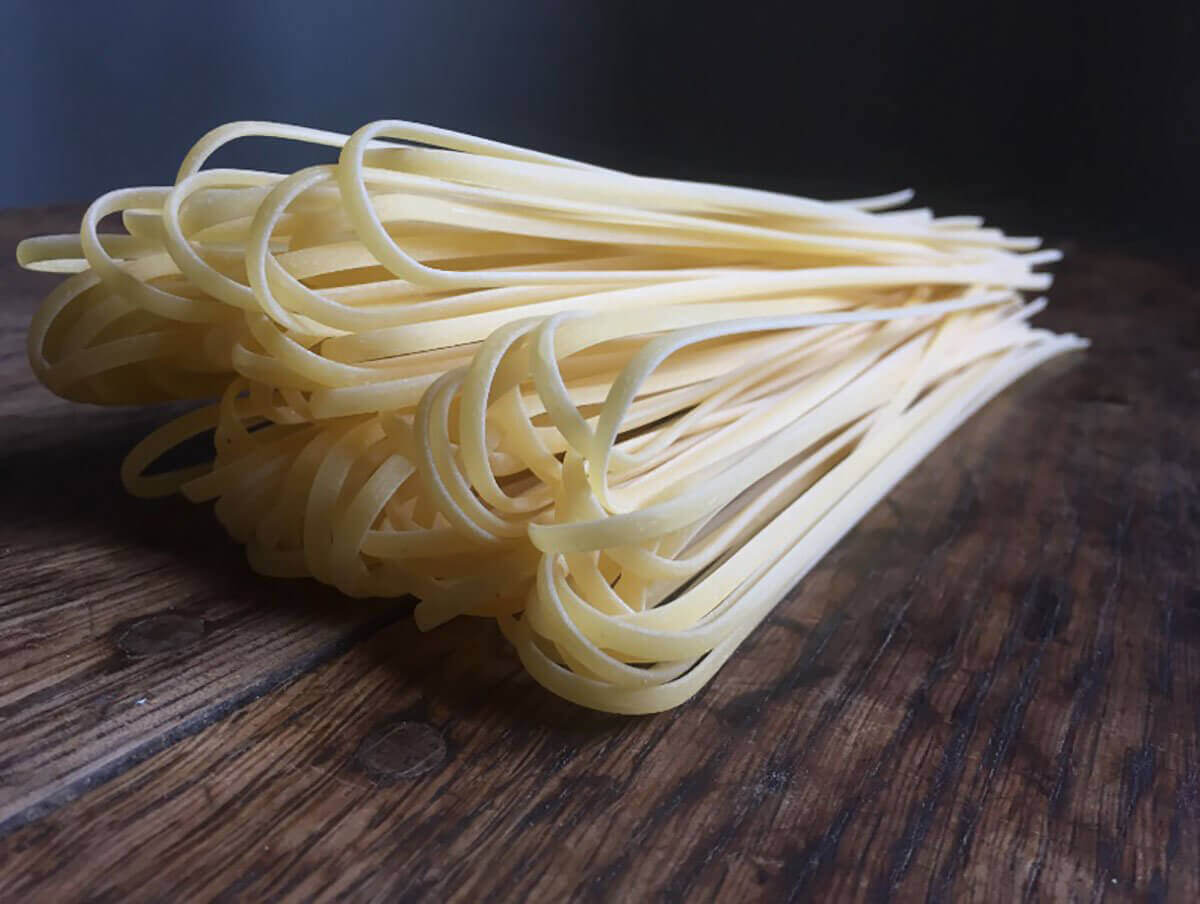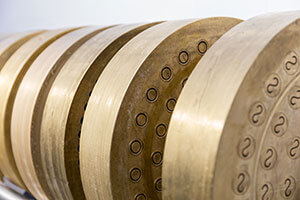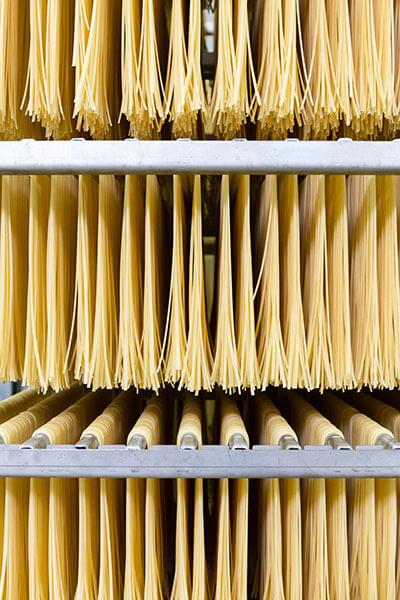THE 5 SECRETS OF OUR ARTISANAL PASTA

The first known mention of a flour-based, string-shaped product called spaguetti, made in a Sicilian town, appears in the 1154 book Il libro di Ruggero by Arab geographer Al-Idrisi. Today, there are more than 600 pasta shapes in Italy.
1. Bronze dies* 
Bronze dies impart to our pasta a lovely porous texture, which means sauces cling more easily to the pasta. Industrial pasta is extruded in Teflon moulds. Sauce doesn’t cling to its glossy and smooth exterior and ends up at the bottom of your plate instead.
 2. Pure water
2. Pure water
Our pasta is made in one of the cleanest, pollutant-free places in Italy: the mountains of Antola Natural Park.
3. Italian hard wheat semolina
Italian hard wheat semolina of the highest quality makes for pasta that holds its shape well once it is cooked.
4. Drying
Our pasta undergoes a long drying process (12 to 20 hours) at a low temperature (30°C), compared to some well-known Italian brands that are left to dry for 3 hours only at a high temperature (110°C).
To enjoy the classic “al dente” texture, it is essential to let the pasta dry for a long time at a low temperature. This way, the centre of the pasta stays harder and doesn’t cook as much once plunged into boiling water. It is this consistency that will help you achieve a perfect pasta dish every time.
Fun fact: Favuzzi’s long pasta (spaghetti and linguine) is hung to dry and packaged by hand. The characteristic U shape, typical of artisanal production, cannot be reproduced through industrial means.
5. Our artisans
 To commute to work in the morning, the Minaglia brothers and their family only have to walk 50 metres! Their business is located in a village called Montoggio, in the Ligurian mountains just north of Genoa. The village is also home to all the pasta factory’s workers.
To commute to work in the morning, the Minaglia brothers and their family only have to walk 50 metres! Their business is located in a village called Montoggio, in the Ligurian mountains just north of Genoa. The village is also home to all the pasta factory’s workers.
Two brothers, Giacomo and Giuseppe, founded the company in 1927. Today, their descendents Paolo and Francesco, a new generation of Minaglia brothers, run the business with their children.
* Bronze: In the past, bronze was a generic term referring to any copper alloy.

